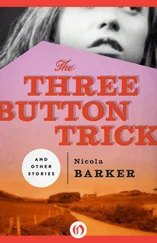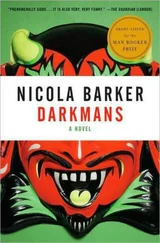She is currently pondering the chapter in which RK (while on his tour of Calcutta’s more terrifying districts with the local police force — all jolly chaps) encounters a white prostitute (of Eurasian stock), mother of nine and widow of an English soldier. This woman is called Mrs. D, and she stands in her cheap doorway on her filthy street with her shameless eyes boring into Kipling’s lily-white (Union Jack — enrobed) heart. Her grimy hovel — which is littered (Kipling haughtily imagines) with cheap paintings of the saints and badly engineered statuettes of the Virgin Mary — rings with the echo of her saucy tongue and her lilting and curiously affecting laugh (this laugh — no whorish cackle, even Kipling admits — has markers of true gentility in it). Mrs. D is certainly to be judged and found wanting by the colonial Rudyard (as all things Calcuttan surely must be).
The actress longs to inhabit Mrs. D and wrest back her humanity from Kipling’s sneering gaze.
“Oh, he sees how hard I am, all right,” Mrs. D (aka the actress) improvises, adopting a fetching southern Irish accent. “A slut, a potential murderess”—(“They said I’d poisoned my husband by putting something into his drinking water,” page 75)—“but even so far as I am from God,” she persists, hands clasped, cheeks streaking with righteous tears, “I feel that I am suddenly held close, gripped tight — by the contempt in his eyes — to the black heart of the Goddess. I am here . I am hers . So completely fallen and yet so warmly embraced within this strange world of reeking filth and death and darkness…” ( Bravo! Rousing rounds of applause! )
But this is not our scene! we tell her, panicked. The light outside is swiftly fading. We must get our take. The actor playing Ramakrishna (our star! our Great Hope!) is already in a fearful bait. His slapping hand is suffering from twinges of repetitive strain injury. We dare not offend him any further. He’s been dieting for months now to get down to the requisite size (featherweight!) and is already up in arms about playing his nude scenes after an especially vicious bout of food poisoning (his local chip shop must take the blame; a tepid saveloy of questionable origin — we’re filming all interiors, for financial reasons, in an adapted mansion in London’s leafy Kensal Green).
Perhaps if we screen what we have accumulated thus far — everything in the can — backward, we may lessen the impact of what is yet to come. Perhaps the actors will be mollified if they can see where they’ve been, where they’ve traveled from.
Watch the film rewinding. Look! The Rani is unslapped and then deep in prayer, and then leaving the temple and then talking with her lawyers. The tape rewinds faster and faster until — Ah! Stop! Stop! Play it! We’re in 1847, and we see the Rani asleep in bed. Her rest is fitful, as all rest in her great city must be (because of the heat, the humidity, the bugs). She has been planning a six-month pilgrimage to Varanasi, the City of Light. But there is no train. And the roads are treacherous. So she is sailing there by boat … along the child Hooghly and the mother Ganga, following these great and holy rivers in the strong conviction that every pitch and bob of her valiant craft will resound in her head, her heart, like a prayer.
It’s the night before she leaves and there are twenty-five boats in her convoy — three for her daughters, one for her doctor, one for the washerman.… One contains four cows, and another is stuffed full of their fodder. Imagine the preparation! Well, you don’t have to imagine it — we can rewind the tape farther and you will see.… But how expedient! There’s the fleet of boats (the grab , the brig , the pansi , the katra , the fealchara , the hola , the sloop , all painstakingly re-created in our Thames-side studios based on the watery etchings of François Balthazar Solvyns) being gradually un loaded. Because during her sleep on the night prior to her departure the Rani is visited by Ma Kali (in some accounts the Rani is already onboard and adrift; it’s her first night on the water and she is passing the very spot —Dakshineswar — where her Kali Temple will be built) who tells her that there is no need for her to head off on this pilgrimage. Instead she is to use the money put aside for her trip to build Ma a temple on the banks of the Ganga. The Goddess will graciously accept her devotions there.
Cynics may pooh-pooh the dream. Cynics may think that there were other reasons — an attack of toothache, a legal problem, the prospect of a big business deal — for this last-minute cancellation, but we believe in the dream. If we explore the Rani’s dream (the Rani dreams in black and white! How curious!) we can see the Goddess and hear her speak. The Goddess is huge and seems to be operated by stop-motion model animation (the Rani is so ahead of her time — even as she sleeps!). Look beyond the light and you can almost see the shadowy figures of Don Chaffey and Ray Harryhausen in conference. This is a remake — no, a premake — of 1963’s Jason and the Argonauts .… Listen … there’s even a rousing theme tune written by Bernard Herrmann!
Oh dear. But the Rani’s daughters are all packed up and ready to go and really, really looking forward to their trip.… And the doctor … even the cows! I’m sorry. I’m really sorry. But the Rani has had a dream (*kindly insert communal, Munch-style silent scream here*). In fact, she has had two dreams, thus far: the first to go on a great pilgrimage (this is a waking dream, a yen), the second telling her not to go and to use the money to buy some land instead and build a temple there.
We have inspected all minor details of the actual dream (our experts are compiling a lengthy and highly informative dossier) and we are still unable to confirm (at this early stage) that the Goddess actually mentions the serving of cooked food at her new temple. Cynics (ah, you’re back again!) may think that this was all simply a matter of social status, not spiritual necessity/divine intervention, and hence contrary, in principle, to Hinduism’s adherence to the rules of caste, and, worse still, the spirit of resignation/renunciation/destruction of the ego /et cetera, which jointly underpin its most essential tenets. But we choose to see this as simply another dream of the Rani’s — another waking dream. A deep desire (or “earnest desire,” as the Ramakrishna Movement would have it). An inexplicable urge. And therefore an expression of her profound spiritual devotion, her modest need to serve as best she can — not an undermining of it.
It’s also important to bear in mind that if the Rani hadn’t had this dream (the cooked food aspiration) then she could’ve hired any number of priests to serve in her temple. But she did have it, which meant casting around for the one specialist, the one expert, the one (quite frankly pretty minor) pandit who would feel inclined to find some kind of working compromise to fulfill it. This was Sri Ramakrishna’s brother, who had engaged with this tricky problem before, remember? (Gadai’s sacred thread ceremony?) Hmmm.
When you play it backward it suddenly all seems … well, so bizarre and incidental as to be divinely inspired. But the cynics (hello, y’all!) see something else. They see a group of individuals who have been naturally inclined, obliged, even forced, to compromise (sidestepping the restrictive rules of sex, gender, race, and caste). They see brash modernity posing as (but signally undermining) the vital traditions of sincere devotion. How could these special someones — these social and spiritual and (yup) political trailblazers— not be drawn together? Is this destiny, or rather just plain (even bare-faced) necessity? Did the Bengali Renaissance start here, or … or were these just the early markers of a movement — an expanding, experimental social psychology — already well under way? Who can say?
Читать дальше












